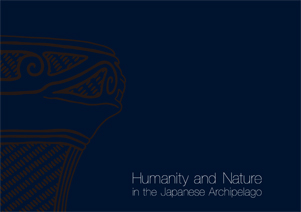Publications
Other Achievements
RIHN researchers and projects also publish a variety of individual volumes on specific themes.

Kyoto Area Studies on Asia 29
At the Edge of Mangrove Forest
The Suku Asli and the Quest for Indigeneity, Ethnicity, and Development

15 Tahun Sanitasi di Kiaracondong, Bandung
(15 Years of Sanitation in Kiaracondong, Bandung)

Dziko Langa: Myself, My Community
This is a handy picture book woven as a publicity brochure for Dziko Langa, a child-youth club in Lusaka, Zambia. The editing was done by Mr. Samuel Hanyika, a local video creator, and the Dziko Langa members themselves, while considering what would be desirable for their own use. They produced an attractive booklet which conveys the club's lively atmosphere. We hope that it will be widely available to the people of Zambia and that many will become aware of Dziko Langa's activities.
⇒ PDF

L’environnement, I’ homme et la toilette
(Environment, People, and Toilets)
We worked with TAM TAM Mobile, a local NGO focused on improving sanitation in Yaoundé, Cameroon, to produce an educational booklet on sanitation improvement to be distributed at their various local events. The book is primarily in French language which is widely spoken in the NGO’s localities, and it has a fun and lively design to make it easy for people to think about sanitation and the actions they can take day to day. We hope that many people in Yaoundé will find this book useful in their daily lives.
⇒ PDF
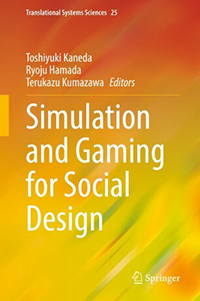
Simulation and Gaming for Social Design
Simulation and gaming (S&G) research is an interdisciplinary field that explores methodologies for obtaining active practical knowledge using simulations and games. The future of social design requires a methodology that promotes a constant exchange between the “action knowledge” of our daily lives and the “theoretical knowledge” of various social problems, including global ones. Interdisciplinary communication has been the subject of research, and recently, S&G has been expected to become a tool for translational communication that links theoretical knowledge and action knowledge.
This book covers all major aspects of simulation and gaming for social design from the theoretical to the practical. It has three parts reflecting its subthemes, namely, “Theory, Methodology, and Perspective,” “Sustainability,” and “Social Entrepreneurship.” It presents theoretical and methodological aspects of simulation and gaming including mathematical approach and agent-based modeling, while it includes game-design cases of global warming, energy transition and fishery resource management, as well as business, ethnic, and ethical understanding.

Satoumi Science
Co-creating Social-Ecological Harmony Between Human and the Sea
This book guides readers to the new concept of “Satoumi” and explains how its practice works to solve challenges in complex social-ecological systems of coastal areas. The book describes the significance of Satoumi Science as a transdisciplinary process. It starts with introducing the definition of Satoumi, highlights the important distinction between active measures (direct actions to improve ecosystem functions and services) and passive measures (a variety of management activities), and presents the concept of Integrated Local Environmental Knowledge (ILEK) as a knowledge base for Satoumi activities. It also introduces residential researchers and bilateral knowledge translators as the key actors of Satoumi co-creation through the transdisciplinary processes.

Simulation and Gaming for Social Design
Simulation and gaming (S&G) research is an interdisciplinary field that explores methodologies for obtaining active practical knowledge using simulations and games. The future of social design requires a methodology that promotes a constant exchange between the “action knowledge” of our daily lives and the “theoretical knowledge” of various social problems, including global ones. Interdisciplinary communication has been the subject of research, and recently, S&G has been expected to become a tool for translational communication that links theoretical knowledge and action knowledge.
This book covers all major aspects of simulation and gaming for social design from the theoretical to the practical. It has three parts reflecting its subthemes, namely, “Theory, Methodology, and Perspective,” “Sustainability,” and “Social Entrepreneurship.” It presents theoretical and methodological aspects of simulation and gaming including mathematical approach and agent-based modeling, while it includes game-design cases of global warming, energy transition and fishery resource management, as well as business, ethnic, and ethical understanding.
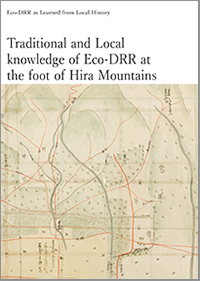
Eco-DRR as Learned from Local History
Traditional and local knowledge of Eco-DRR at the foot of Hira Mountains
How have people dealt with the blessings and disasters of nature over the course of history? Over a long period of time, people in each local community have accumulated a wealth of knowledge about how to live with nature. At the foot of Hira Mountains in Shiga Prefecture, which is one of the research sites of the RIHN's Eco-DRR project, we have been trying to understand people's lives through topographical, cultural and historical materials. This book gives an overview of how the local people have used the blessings of nature to cope with natural disasters, using old documents, old drawings, and photographs.
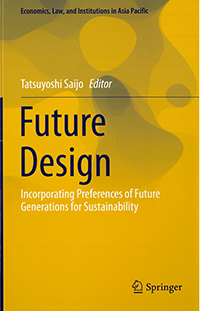
Future Design
Incorporating Preferences of Future Generations for Sustainability
This book discusses imaginary future generations and how current decision-making will influence those future generations. Markets and democracies focus on the present and therefore tend to make us forget that we are living in the present, with ancestors preceding and descendants succeeding us. Markets are excellent devices to equate supply and demand in the short term, but not for allocating resources between current and future generations, since future generations do not exist yet. Democracy is also not “applicable” for future generations, since citizens vote for candidates who will serve members of their, i.e., the current, generation. In order to overcome these shortcomings, the authors discusses imaginary future generations and future ministries in the context of current decision-making in fields such as the environment, urban management, forestry, water management, and finance. The idea of imaginary future generations comes from the Native American Iroquois, who had strong norms that compelled them to incorporate the interests of people seven generations ahead when making decisions.
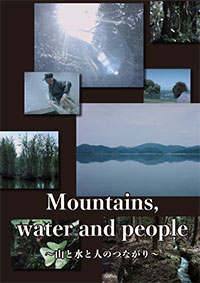
Mountains, water and people
〜山と水と人のつながり〜
The Eco-DRR project has been exploring how local people in the Lake Biwa area used to cope with natural disasters and benefit from various ecosystem services, informing us the traditional way of Eco-DRR (ecosystem-based disaster risk reduction). In the Satoyama area around Lake Biwa, we can see the intrinsic connections among mountains, rivers and the lake and the local culture nurtured through the long history of connections between people and nature. The film entitled “Mountains, water and people” was filmed by Mikhail Lylov, an international film director through interviewing and discussing with the local people, in which the project members joined as well. This brochure provides a detailed introduction of the film.
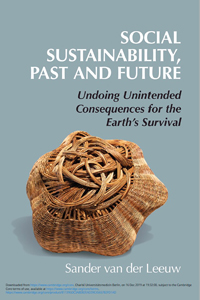
SOCIAL SUSTAINABILITY, PAST AND FUTURE : Undoing Unintended Consequences for the Earth’s Survival
Sander van der Leeuw, who has recently been appointed Honorary Fellow of Research Institute of Humanity and Nature, adopts the concept of ‘social sustainability’ in the title of his new volume. He examines how the modern world has been caught in a socioeconomic dynamic that has generated the conundrum of sustainability. Combining the methods of social science and complex systems science, he explores how western, developed nations have globalized their world view and how that view has led to the sustainability challenges we are now facing. Its central theme is the coevolution of cognition, demography, social organization, technology, and environmental impact. Beginning with the earliest human societies, van der Leeuw links the distant past with the present in order to demonstrate how the information and communications technology revolution is undermining many of the institutional pillars on which contemporary societies have been constructed. An original view of social evolution as the history of human information-processing, his book shows how the past offers insight into the present and can help us deal with the future.
Sander van der Leeuw is Foundation Professor in the Schools of Sustainability and Human Evolution and Social Change at Arizona State University, and has served for RIHN’s External Research Evaluation Committee for many years. Trained as an archaeologist and historian, he specializes in long-term interactions between humans and their environments and pioneers the application of the complex adaptive systems approach to socio-environmental challenges, technology, and innovation. Van der Leeuw is the author and editor of eighteen books. In 2012 he was awarded the “Champion of the Earth for Science and Innovation” prize by the United Nations Environment Program.
- Edited by Sander E. van der Leeuw
- Published by Cambridge University Press, 2019 (Open Access)
- ISBN (Hardcover)9781108498692
- ISBN (paperback)9781108724425
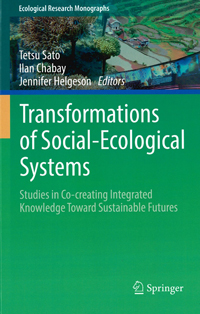
Transformations of Social-Ecological Systems Studies in Co-creating Integrated Knowledge Toward Sustainable Futures
This book is the final compilation of the RIHN research project “Creation and Sustainable Governance of New Commons through Formation of Integrated Local Environmental Knowledge (ILEK Project)”. )Based on the case studies from local communities of the world and utilizing novel concepts including integrated local environmental knowledge (ILEK), residential research, and bilateral knowledge translation, this book endeavors to synthesize new transdisciplinary knowledge co-creation processes to promote societal transformations to achieve sustainable and equitable futures.
- Edited by Sato, Tetsu, Ilan Chabay, Jennifer Helgeson
- Published by Springer,2018
- $379.99(Hardcover)$299.0(eBook)
- ISBN (Hardcover)978-981-13-2326-3
- ISBN (eBook)978-981-13-2327-0
- ⇒ Publisher's Website
- ⇒ Japanese version
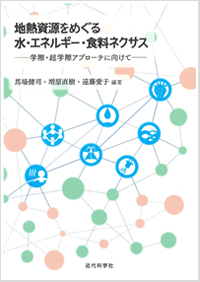
Water-Energy-Food Nexus regarding Geothermal Resource:
Towards Inter-disciplinary and Trans-disciplinary Approaches
- Edited by Kenshi Baba, Naoki Masuhara, Aiko Endo
- Published by Kindai kagaku sha, 2018
- A5, 308 pages, 3,800 yen+ tax
- ISBN 978-4-7649-0578-8
- ⇒ Publisher's Website
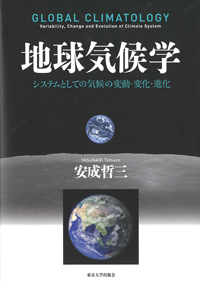
Global Climatology: Variability, Change and Evolution of Climate System
- Edited by YASUNARI, Tetsuzo
- Published by University of Tokyo Press,2018
- A5, 208 pages, 3,400 yen+ tax
- ISBN 978-4-13-062728-3I
- ⇒ Publisher's Website
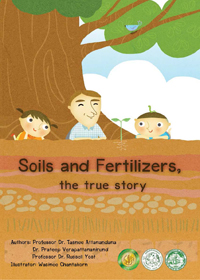
Comic books“Soils and Fertilizers, the true story”
- Collaborated with RIHN project ‘Desertification and Livelihood in Semi-Arid Afro-Eurasia’
- 2018/ 2 Release
- Not for Sale
- ISBN 978-616-90047-7-6
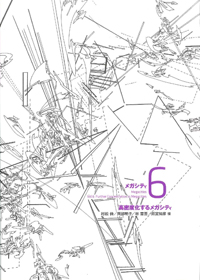
Megacities Vol.6 Further Concentration in Megacities
- Edited by MURAMATSU Shin, OKABE Akiko, AMEMIYA Tomohiko
- Published by University of Tokyo Press, 2017
- A5 280 pages, 4,104 yen (tax included)
- ISBN 978-4-13-065156-1
- ⇒ Publisher's Website
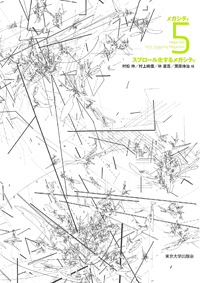
Megacities vol.5 Sprawling Megacities
- Edited by MURAMATSU Shin, MURAKAMI Akinobu, HAYASHI Kengo, KURIHARA Shinji
- Published by University of Tokyo Press, 2017
- A5 256 pages, 4,104 yen (tax included)
- ISBN 978-4-13-065155-4
- ⇒ Publisher's Website
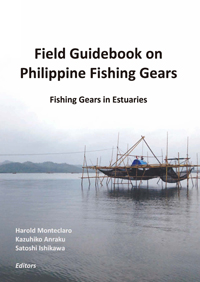
Field Guidebook on Philippine Fishing Gears - Fishing Gears in Estuaries
This book aims to document the fishing gears and methods used in an estuary, with New Washington-Batan estuaries, Aklan, Philippines. It illustrates the physical processes in the estuary that influence the choice and success of fishing methods, how fish biology and behaviour affect fishing gear efficiency, and how to conduct field work related to capture fisheries. It also provides information on the possible ecological and social implications on the use of each gear.
- Harold Monteclaro, Kazuhiko Anraku and Satoshi Ishikawa (eds.)
- Research Institute for Humanity and Nature
- 2017/ 3 Release
- Not for Sale
- ⇒ Download(PDF)
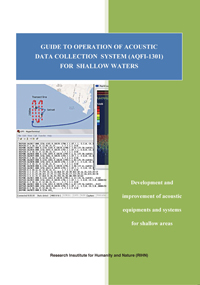
GUIDE TO OPERATION OF ACOUSTIC DATA COLLECTION SYSTEM (AQFI-1301) FOR SHALLOW WATERS
This book introduces the equipment for investigating the acoustic resource amount in shallow coastal areas. It covers everything from hardware to software of a simple type weighing fish finder system using a commercially available fish finder and it is recommended for those who want to start investigating acoustic resources in shallow water at low cost.
- Miyamoto, Y., Uchida, K., Theparoonrat, Y., Anongponyoskun, M., Thongsila, K., Minlee, Y., Sasakura, T. and Hasegawa, K. (eds.)
- Research Institute for Humanity and Nature
- 2017/ 3 Release
- Not for Sale
- ⇒ Download(PDF)
- ⇒ Original source code can be downloaded from here. (zip file)
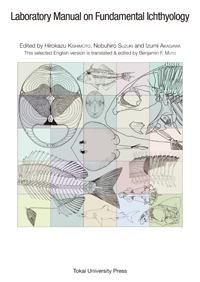
Laboratory Manual on Fundamental Ichthyology
This text book to study fishes is originally published in Japanese for undergraduate students of School of Marine Science and Technology, Tokai University. The translation has done on selected chapters for worldwide users. This publication is supported by Area-capability Project, Research Institute for Humanity and Nature and School of Marine Science and Technology, Tokai University.
- KISHIMOTO Hirokazu, SUZUKI Nobuhiro and AKAGAWA Izumi (eds.)
- This selected English version is translated & edited by Benjamin F. Muto Tokai University Press
- 2017/ 2 Release
- Not for Sale
- ⇒ Download(PDF)
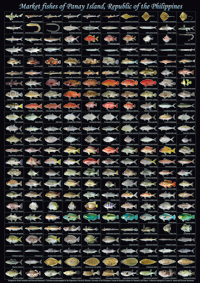
Market fishes of Panay Island, Republic of the Philippines
This poster includes color photographs of 240 market fishes from Panay Island, the Philippines.
- Motomura, H., U. B. Alama, N. Muto, R. Babaran, and S. Ishikawa (eds.)
- Kagoshima University Museum, Kagoshima, University of the Philippines Visayas, Iloilo, and Research Institute for Humanity and Nature, Kyoto
- 2017/ 2 Release
- Not for Sale
- ⇒ Download(PDF)
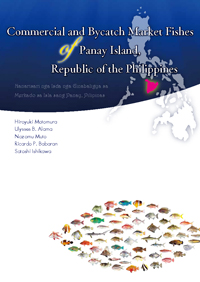
Commercial and bycatch market fishes of Panay Island, Republic of the Philippines
This book provides 911 color photographs of 597 fish species belonging to 132 families from Panay Island on the basis of voucher specimens. At least 19 of the 597 species in this book represent the first record of the species from Philippine waters, and several unidentified species expressed as “sp.” are probably undescribed species that need further study. Each species account includes family name, scientific name, English name, morphological features, distribution, habitat, size, and comments on taxonomy, nomenclature, comparisons, and market information.
- Motomura, H., U. B. Alama, N. Muto, R. Babaran, and S. Ishikawa (eds.)
- Kagoshima University Museum, Kagoshima, University of the Philippines Visayas, Iloilo, and Research Institute for Humanity and Nature, Kyoto
- 2017/ 1 Release
- Not for Sale
- ⇒ Download
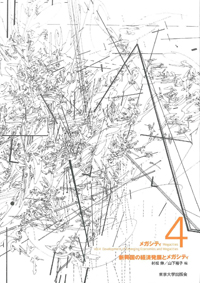
Megacities vol.4 Development of Emerging Economics and Megacities
- Edited by MURAMATSU Shin, YAMASHITA Yuko
- Published by University of Tokyo Press, 2016
- A5 224 pages, 3,672 yen (tax included)
- ISBN 978-4-13-065154-7
- ⇒ Publisher's Website
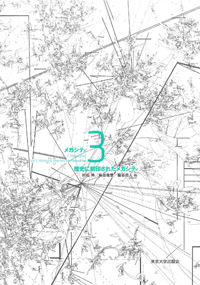
Megacities vol.3 Historical Imprints on Megacities
- Edited by MURAMATSU Shin, SHIMADA Ryuto, KAGOTANI Naoto
- Published by University of Tokyo Press, 2016
- A5 272 pages, 4,104 yen (tax included)
- ISBN 978-4-13-065153-0
- ⇒ Publisher's Website
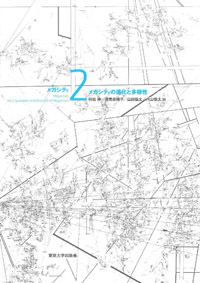
Megacities vol.2 Evolution and Diversity of Megacities
- Edited by MURAMATSU Shin, FUKAMI Naoko, YAMADA Kyota, UCHIYAMA Yuta
- Published by University of Tokyo Press, 2016
- A5 440 pages, 5,184 yen (tax included)
- ISBN 978-4-13-065152-3
- ⇒ Publisher's Website
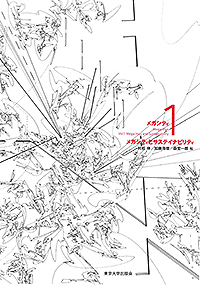
Megacities vol.1 Megacities and Sustainability
- Edited by MURAMATSU Shin, KATO Hironori, MORI Koichiro
- Published by University of Tokyo Press, 2016
- A5 304 pages, 4,104 yen (tax included)
- ISBN 978-4-13-065151-6
- ⇒ Publisher's Website
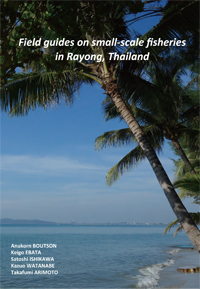
Field guides on small-scale fisheries in Rayong, Thailand
Field surveys on small-scale fisheries in Rayong, Thailand have been conducted since December 2012. Information on actual condition in small-scale fisheries is compiled on a field guides. The field guides is useful in making guideline of management plans for not only Rayong coastal fisheries but also small-scale fisheries in tropical region.
- Anukorn BOUTSON, Keigo EBATA, Satoshi ISHIKAWA, Kazuo WATANABE, Takafumi ARIMOTO (eds.)
- “Coastal Area-capability Enhancement in Southeast Asia”, RIHN
- 2016/ 3 Release
- Not for Sale
- ISBN 978-4-906888-26-9
- ⇒ Download(PDF)
- ⇒ iTunes U
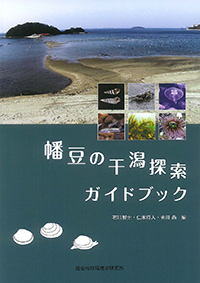
Field Guide to Biodiversity of Higashi-Hazu Tidal Flat in Mikawa Bay
AC project members at RIHN and Tokai University contributed to this guidebook to introduce the attractive nature and culture of Hazu area in Mikawa bay from each member’s unique perspectives. This field guidebook should be a good use of travel to Hazu area, shell gathering and environment studies.
- Edited by Ishikawa, S., M. Niki and N. Yoshikawa
- Research Institute for Humanity and Nature, 2016
- Not for Sale
- ISBN 978-4-906888-22-1
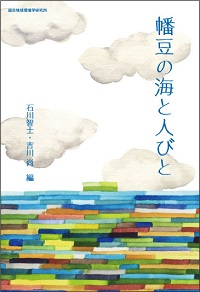
Living and nature of coastal community in Higashi-Hazu
This book introduces our research on coastal area in Higashi-Hazu. Topics include comprehensive essence such as remains, ports, fisheries, elemental analysis, plankton, seaweeds, shrimp & crabs, fishes, dolphins, environmental studies, active learnings and regional development. This book should attract not only people who live in Hazu, but also those who visit Hazu, and even who do not know Hazu to the natural environment and social culture in Hazu.
- Edited by Ishikawa, S., N. Yoshikawa
- Research Institute for Humanity and Nature
“Coastal Area capability Enhancement in Southeast Asia Project”, 2016 - Not for Sale
- ISBN 978-4-906888-28-3
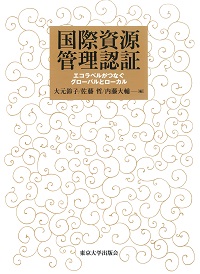
International Certification for Sustainable Resource Management: Ecolabels Linking the Global and the Local
- Edited by OMOTO Suzuko, SATO Tetsu and NAITO Daisuke
- Published by University of Tokyo Press, 2016
- A5 256 page 4,800 yen (tax included)
- ISBN 978-4-13-060314-0
- ⇒ Publisher's Website
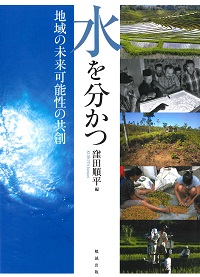
Sharing Water -Co-designing Sustainable Futures through local water resources management
(Mizu Wo Wakatsu)
- Edited by KUBOTA Junpei
- Published by BENSEI.JP, 2016
- A5 250 page 4,200 yen (tax included)
- ISBN 978-4-585-23040-3
- ⇒ Publisher's Website
Humanity and Nature in the Japanese Archipelago
In 2015 the CRP(Center for Research Promotion) published Humanity and Nature in the Japanese Archipelago, an English language illustrated volume based on research conducted at RIHN between 2000-2009 and originally published in Japanese in The Encyclopedia of Global Environmental Studies (2010). Working with several authors of the original texts as well as a number of current RIHN researchers and a skilled team of scientific illustrators and artists, the original entries were brought into a single narrative describing key themes in the study of long-term human-environmental change in Japan. The volume includes a core section on the Jomon period in Japan, a fascinating segment of human and environmental history about which there is precious little written in English for a non-specialist audience.
※ Please contact Public Relations Subunit for availability. 
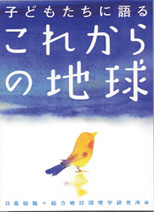
Kodomo Tachi ni Kataru Korekara no Chikyu
- Edited by HIDAKA Toshitaka and RIHN
- Published by Kodansha, 2006
- 1,365 yen (tax included)
- ISBN978-4-06-213383-8
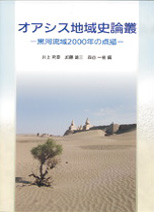
Oasis Chiikishi Ronso
- Edited by INOUE Mitsuyoshi, KATO Yuzo and MORIYA Kazuki
- Published by Kodansha, 2007
- 4,620 yen (tax included)
- ISBN978-4-87-974605-4
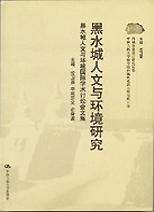
黒水城人文与環境研究
- Edited by SHEN Wei Rong, NAKAWO Masayoshi and SHI Jing Bo
- Published by Renmin University of China, 2007
- ISBN978-7-30-007956-1 / 7300079563
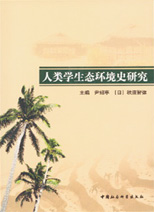
人類学生態環境史研究
- Edited by YIN Shao Ting and AKIMICHI Tomoya
- Published by China Social Science Press, 2006
- ISBN7500454880
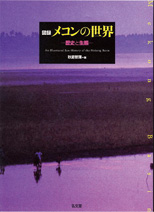
Zuroku Mekong no Sekai
- Edited by AKIMICHI Tomoya
- Published by Koubundou, 2007
- 5,040 yen (tax included)
- ISBN978-4-335-56114-6
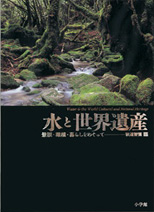
Mizu to Sekai Isan
- Edited by AKIMICHI Tomoya
- Published by Shogakukan, 2007
- 1,890 yen (tax included)
- ISBN978-4-09-387715-2
▲PAGE TOP


